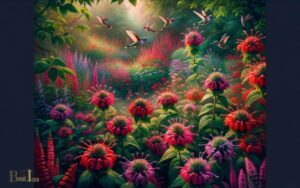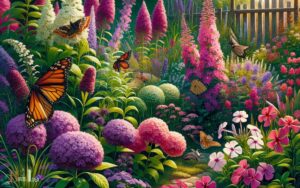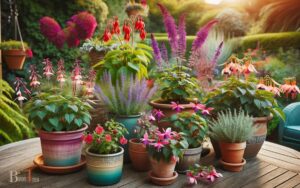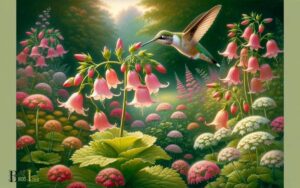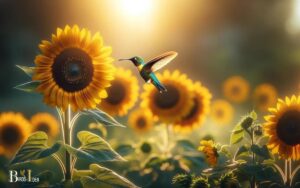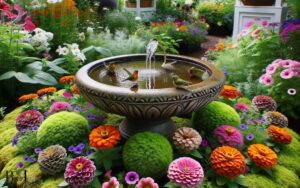Do Shrimp Plants Attract Hummingbirds? Yes!
Yes, shrimp plants are known to attract hummingbirds due to their vibrant, showy bracts and tubular flowers rich in nectar.
Shrimp plants not only add aesthetic value to gardens but also play a role in supporting local hummingbird populations by providing a valuable food source.
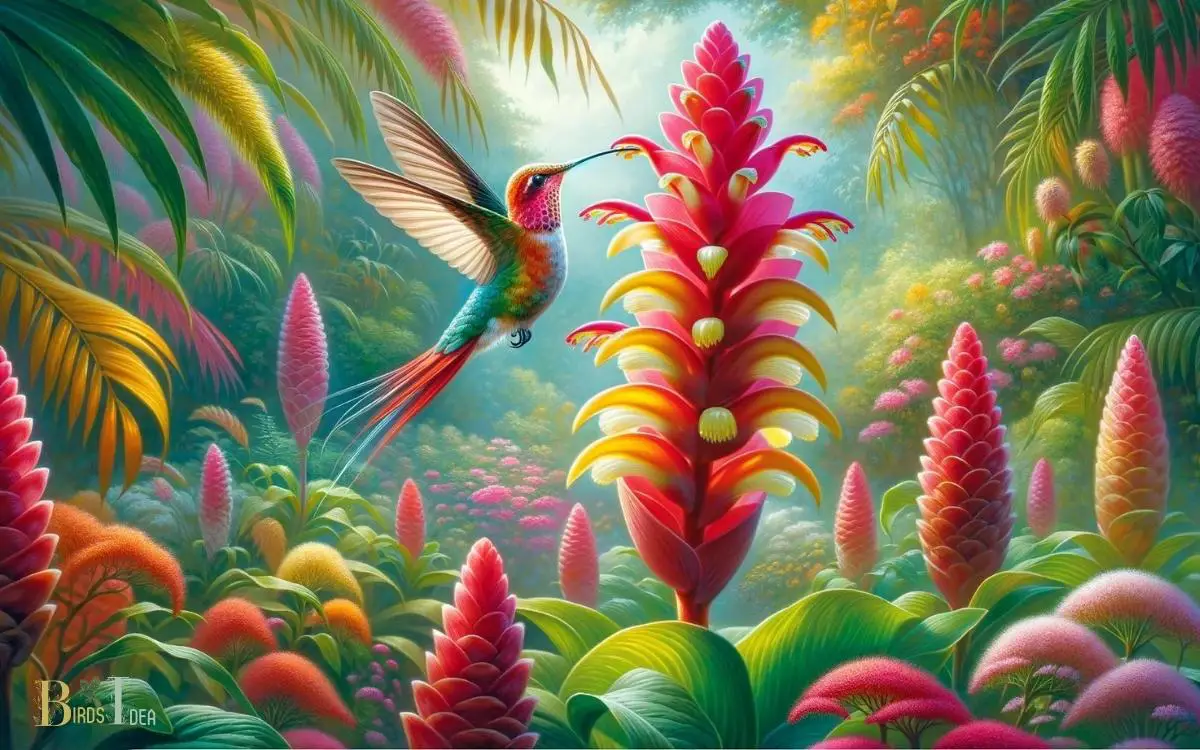
Key Takeaway
Characteristics of Shrimp Plants
Shrimp plants, also known as Justicia brandegeeana, are characterized by their vibrant, cone-shaped bracts and long, tubular flowers.
These unique plants are native to Mexico and Guatemala and are popular for their ornamental value.
The bracts of the shrimp plant come in a variety of colors, including red, pink, and yellow, making them an attractive addition to gardens and indoor spaces.
The long, tubular flowers extend from the bracts, creating an eye-catching display. Shrimp plants are relatively low-maintenance and can thrive in a variety of conditions, making them a favorite among gardeners.
Their striking appearance and ease of care make them a desirable choice for those looking to add a pop of color to their surroundings.
Hummingbird Feeding Behavior
Native to Mexico and Guatemala, shrimp plants, with their vibrant, cone-shaped bracts and long, tubular flowers, are sought after for their ornamental value, which may attract hummingbirds due to the plants’ striking appearance and nectar-rich flowers.
- Hummingbirds have an incredibly fast metabolism, requiring them to feed every 10-15 minutes throughout the day.
- This rapid feeding behavior makes them highly attracted to nectar-producing plants like shrimp plants.
- Hummingbirds are known to remember the locations of nectar-rich food sources, returning to the same plants regularly.
- This behavior makes shrimp plants a reliable food source for hummingbirds, especially during migration.
- Hummingbirds are also attracted to the vibrant colors of shrimp plants, especially red and orange hues, as they have better color vision in the red and orange spectrum.
These feeding behaviors make shrimp plants a prime choice for attracting and sustaining hummingbirds.
Nectar Production of Shrimp Plants
The nectar production of shrimp plants enhances their appeal to hummingbirds, drawing the birds with its abundant, sugary fluid.
Shrimp plants (Justicia brandegeana) produce nectar in specialized glands at the base of their floral tubes.
This nectar is rich in sucrose, glucose, and fructose, providing a high-energy food source for hummingbirds.
The production of nectar in shrimp plants is influenced by environmental factors such as light, temperature, and humidity.
The peak nectar production usually coincides with the flowering period of the plant, ensuring a fresh and ample supply for visiting hummingbirds.
Below is a table summarizing the nectar production of shrimp plants and its appeal to hummingbirds:
| Nectar Production of Shrimp Plants | Meaning |
|---|---|
| Nectar Components | Sucrose, Glucose, Fructose |
| Environmental Factors | Light, Temperature, Humidity |
| Peak Production | During Flowering Period |
| Appeal to Hummingbirds | High-energy Food Source |
Attracting Hummingbirds to Your Garden
A variety of flowers that bloom at different times throughout the year can attract hummingbirds to your garden.
To create an inviting environment for these delightful creatures, consider the following tips:
- Plant a diverse range of flowers: Hummingbirds are attracted to a variety of colors, so include red, orange, and pink blooms in your garden.
- Choose trumpet-shaped flowers: These are the perfect shape for hummingbirds to feed from.
- Select flowers with long bloom periods: This ensures a consistent nectar source for the hummingbirds throughout the seasons.
Best Practices for Planting Shrimp Plants
When planting shrimp plants, it is important to consider the appropriate soil conditions and sunlight exposure to ensure their healthy growth and blooming.
Shrimp plants thrive in well-draining, rich soil with a slightly acidic to neutral pH level. They also prefer partial shade to full sunlight, making them versatile for various garden settings.
Below is a table summarizing the best practices for planting shrimp plants:
| Aspect | Requirement |
|---|---|
| Soil | Well-draining, rich soil with pH 6.0-7.0 |
| Sunlight Exposure | Partial shade to full sunlight |
| Watering | Regular watering, allowing soil to dry slightly between waterings |
Creating a Hummingbird-Friendly Environment
Creating a hummingbird-friendly environment involves understanding the specific plants and flowers that attract these tiny birds.
Shrimp plants are known to be a favorite of hummingbirds, but there are also other flowers and plants that can be included in a garden to create an inviting space for them.
Tips for attracting hummingbirds include providing ample nectar sources, offering a variety of colors and shapes, and ensuring a safe and comfortable environment for these delightful creatures.
Shrimp Plants and Hummingbirds
Shrimp plants bloom all year round, providing a consistent nectar source for hummingbirds.
- The tubular shape of the shrimp plant’s flowers is tailored to fit the hummingbird’s long, slender beak, allowing for easy access to the sweet nectar.
- The vibrant red, orange, or pink hues of the shrimp plant’s flowers act as a visual cue for hummingbirds, attracting them to the nectar source.
- The dense foliage of the shrimp plant provides a safe and secure environment for hummingbirds to rest and nest.
Creating a hummingbird-friendly environment with shrimp plants involves understanding the unique relationship between these plants and hummingbirds. This will ensure that your garden becomes a haven for these delightful creatures.
Hummingbird-Friendly Plants and Flowers
Hummingbirds are attracted to a variety of plants and flowers that provide nectar and a safe environment for feeding and nesting.
Some popular choices include trumpet vine, bee balm, salvia, and butterfly bush, all of which produce vibrant, tubular flowers perfect for the long bills of hummingbirds.
Red and orange flowers often catch their attention, but they also feed on other colors. It’s important to have a continuous bloom of flowers from early spring through fall to provide a consistent nectar source.
Additionally, planting a variety of flower shapes and sizes can accommodate different hummingbird species.
Creating a hummingbird-friendly environment with these plants and flowers enhances the likelihood of attracting these delightful creatures to your garden.
To further optimize the chances of attracting hummingbirds, there are specific tips and strategies that can be employed.
Tips for Attracting Hummingbirds
Attracting hummingbirds to your garden can be achieved by strategically planting and maintaining a variety of nectar-producing flowers and providing a safe nesting environment.
To create a hummingbird-friendly environment, consider the following tips:
- Plant a diverse array of nectar-producing flowers to provide a continuous nectar supply throughout the seasons.
- Include flowers with different shapes and colors to attract a variety of hummingbird species.
- Choose native plants whenever possible, as they are well-suited to the local climate and ecosystem.
- Avoid using pesticides and herbicides in your garden, as these can be harmful to hummingbirds and their food sources.
Conclusion
The vibrant and alluring shrimp plant is a beacon for hummingbirds, drawing them in with its sweet nectar and striking appearance.
With its long, tubular flowers and enticing scent, the shrimp plant acts as a siren song for these tiny, iridescent birds, creating a harmonious and enchanting garden environment.
By planting shrimp plants and creating a hummingbird-friendly space, gardeners can invite these delightful creatures to dance and flit among the flowers.

